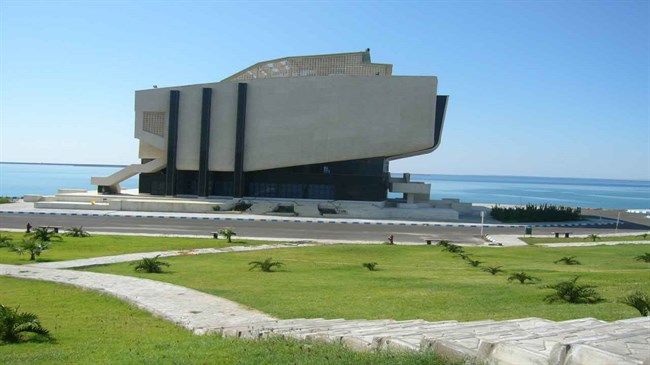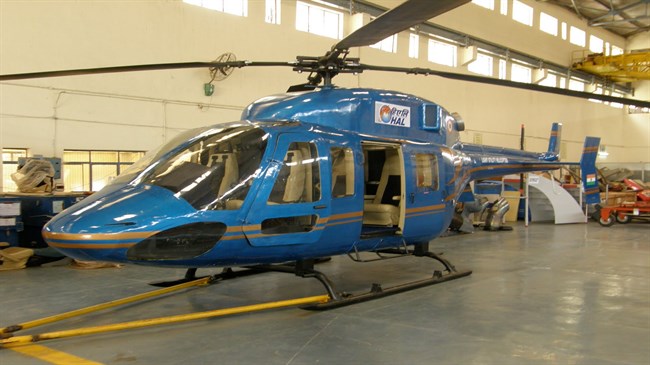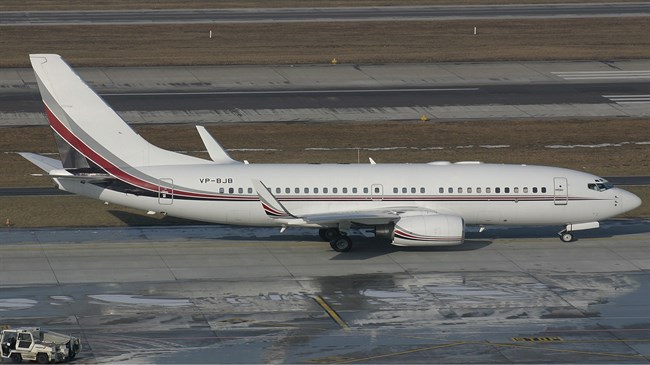|
|

|
Iran, Russia plan joint bank
2015/Nov/20
|
|
|
|
Mehdi Mohtashami, the deputy co-chair of Russian-Iranian intergovernmental commission said Iran has accepted the Russian proposal to establish a bank for investing in joint economic projects.
The bank will initially focus on investment in bilateral trade and other joint economic projects.
"The initial capital will, probably, total $500 million. The capital could be increased with the growth in cooperation in trade and joint projects," Mohtashami told RIA Novosti.
Iran”s Ambassador to Russian Mehdi Sanaei said in January that Tehran and Moscow are working on a plan to use national currencies in bilateral trade for which he said the two countries will create a joint bank or a mutual account.
Russian Trade Representative in Iran Andrei Lugansky recently noted that the proposed Russian-Iranian bank would be very useful.
However, Kamran Dadkhah, an economics professor at Northeastern University in Boston, Massachusetts told AzerNews that the usefulness of the Russian-Iranian bank will depend upon its charter and organization.
"If it operates on the basis of international banking rules using international currencies (the dollar and euro), it would be acceptable. But if it is under the influence of Russian authorities, then Iran should avoid it," the expert warned.
In March, Iran and Russia signed a preliminary deal to create a joint regulation body to oversee interbank financial transactions between the two countries.
The agreement that was signed between the Iranian and Russian central banks was regarded as a one step closer ahead toward the establishment of the promised joint bank — which is believed to have been specifically designed to help evade the impacts of US-led sanctions on the two countries.
Russia was the 18th major importer of Iranian non-oil goods in the year to March 21, 2015 with imports and exports totaling $296.509 million and $667.18 million of non-oil goods to and from Iran, respectively, according to the Iran Customs Administration.
|
|
|
|
|
|
|
|
.jpg)
|
|
News 2015/Nov/20 |
|
|
|
|
|
|
|
|

|
Chinese firms ready to invest in Chabahar
2015/Nov/20
|
|
|
|
Chinese Ambassador to Iran Pang Sen said in Chabahar on Thursday that Chinese companies have welcomed investment in the southern Iranian port and it is expected that the nuclear deal between Iran and the P5+1 will help broaden Iran-China cooperation
Speaking to IRNA, he said current infrastructural construction in Chabahar port should be seen as part of development strategy in the east of the country.
The aim of his visit to Chabahar is to identify suitable grounds for expanding business cooperation and it seems that Iran has made significant achievements in port construction, he said.
China has invaluable experiences in port construction and can help Iran modernize the port, the envoy said.
"We believe that transit of goods and transshipment in Chabahar port will be of prime importance for neighboring states as well as countries in the region which can play significant role to this end," the envoy said.
|
|
|
|
|
|
|
|

|
|
News 2015/Nov/20 |
|
|
|
|
|
|
|
|

|
Foreign helicopter manufacturers keen on cooperation
2015/Oct/18
|
|
|
|
Following the removal of Western sanctions, leading international manufacturers of civilian helicopters and spare parts have announced willingness to resume cooperation with Iran and invest in Iranian projects.
Speaking to Iran Daily, Mahmoud Azin, the managing director of Iran Helicopter Company, further said in the past four months, French, Italian, German as well as US companies expressed interest in supplying modern helicopters and their spare parts to Iran.
He added currently, close to 60 non-military helicopters are engaged in various Iranian sectors, of which 30 belong to the IHC.
Azin listed their models as R44, Bell 206, 212 and 412 as well as Helicopter Ecureuil, adding their missions are defined by the functions they are capable of.
He noted Iran imported nine helicopters in the past four years despite the sanctions.
"The country possesses the technology to produce modern helicopters conforming to international standards; however, manufacturing them for the sole purpose of meeting domestic needs is not currently economical."
IHC chief added leading international companies manufacture and sell 1,000 helicopters every five years on average which makes it very difficult for newcomers to compete with them.
He put the standard flight temperature for most of the civilian helicopters currently used in Iran and their ceiling (the maximum density altitude an aircraft can attain under a set of conditions) at 15°C and 3,000 feet above the mean sea level, respectively.
"Iran is a land with diverse climatic zones and altitudes. Therefore, to reach a particular location, sometimes, helicopters have to fly at an altitude of 7,000 feet AMSL. For instance, Shahr-e Kord airport is located at an altitude of 3,000 feet AMSL. In addition, the temperature in certain Iranian cities such as Khuzestan and Kurdestan reaches 50°C or drops to -30°C, correspondingly, on some days."
On the functions of the country”s civilian helicopters, he said they are used to conduct exploration activities and construct oil platforms.
"Most of these helicopters are old. To safeguard flight security, huge amounts are spent per annum for maintenance and spare parts."
Azin disclosed that a number of contracts are currently under study to purchase spare parts from European firms, adding although most of the helicopters are old and maintenance costs are quite high, they are fully safe to fly.
"At present, we lack young pilots. As stipulated in International Civil Aviation Organization regulations, pilots above 60 years old are not authorized to fly, unless accompanied by a younger copilot. This is while, until a few years ago, the retired staff of the Armed Forces of the Islamic Republic of Iran constituted a majority of the air fleet”s pilots."
To overcome this, Iran”s first civil aviation training center was launched last December. "The institute has trained 15 pilots who are to graduate on December 6, 2015."
|
|
|
|
|
|
|
|

|
|
News 2015/Nov/18 |
|
|
|
|
|
|
|
|

|
European firm invests $6b in Iran"s power sector
2015/Nov/04
|
|
|
|
The official said the European firm will invest the mentioned fund for the construction of four combined-cycle power plants with a total electricity generation capacity of 3520 megawatts and also a wind farm in Iran, the Iranian government”s official website dolat.ir reported.
However, Nobakht did not mention name of the company and its country as well.
It is somehow a huge investment in Iran by a European company in a condition that the Wes-led sanctions have not been still removed against the country, he noted.
Business delegations from around the world have flocked to Iran since the July 14 deal, in which Tehran agreed to curb its nuclear program in exchange for an end to economic sanctions that have hit the country”s economy.
Last October, Iranian President Hassan Rouhani said there is a global surge of interest in new business opportunities in Iran, adding the country is ready to open its arms to international entrepreneurs if they bring in investment and technology.
|
|
|
|
|
|
|
|
|
|
News 2015/Nov/04 |
|
|
|
|
|
|
|
|

|
Iran buys 13 Boeing jets
2015/NOV/1
|
|
|
|
Two of the used aircraft, of the vintage 737-400 model, will fly in from a European country on Monday night, reported Fars News Agency quoting an informed source on Sunday without disclosing any names.
The two aircraft are the first of eight Boeing 737s bought by Nasim Air — a new airline based in the central city of Isfahan, the unnamed official said.
Caspian Airlines has purchased three other while Aseman Airlines bought two of the 150-seat short- to medium-range jets.
Meanwhile, a UK-built Avro RJ short-haul airliner, bought by Mahan Air, flew into Iran on Friday, the source added.
According to Fars, the aircraft are aged above 15 but the official said it was a non-issue. "The main issue about an aircraft is being able to procure parts. It doesn”t matter how old a plane is. What is essential is to have the manufacturing company ensure parts supply," the official said.
Iran s purchase of eight second-hand Airbus A340s and one Airbus A321 in May ran into controversy after the US indicated that it might try to block passenger planes flying international routes.
The US Treasury department said Mahan Air, which had acquired the aircraft, had a “blockable interest” in the planes because the Iranian airline was blacklisted by Washington.
None of the airlines, which have bought the used Boeing 737s, are blacklisted but it is not clear yet how the US will react to the trade.
US sanctions ban the sale of aircraft and parts to Iran. Under an interim nuclear deal in 2013, the West eased the ban on sales of spare parts but selling planes is still prohibited.
Western sanctions are the biggest enemy of Iran”s aviation which has been plagued by a series of air crashes, claiming the lives of hundreds of Iranians.
A nuclear accord reached with Tehran in July has provided Iran with a chance to renew its fleet of commercial aircraft.
Minister of Roads and Urban Development Abbas Akhoundi has said that Iran would need to buy 550 commercial aircraft of various models at a cost of $60 billion.
Iran”s civil aviation fleet has 248 aircraft with an average age of 19 years, 100 of which are grounded, he said.
|
|
|
|
|
|
|
|

|
|
News 2015/NOV/1 |
|
|
|
|
|
|